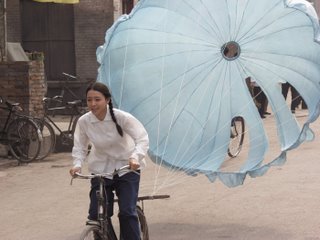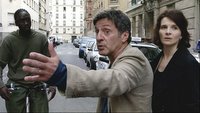
This is a remarkable film. First, because it was made at least two years before the Gospel of Judas was unearthed in Egypt a few years ago and before the National Geographic scientifically authenticated that the document was indeed written in 300 AD or earlier, by the Gnostics and or the Orthodox Christians of Egypt. It is also well established and historically accepted now that the Four Gospels of the New Testament are not the only Gospels and that King Constantine several centuries later ruled that all other Gospels other than the four in the Bible are not acceptable because he sought the path of least controversy for the propagation and consolidation of Christianity.
What is remarkable about the film is its attempt to re-evaluate the known facts surrounding a chosen disciple of Christ—-who evidently needed a Judas to betray him so that he would be crucified and thus die on the cross to leave his mortal body. Christ picked Judas; Judas did not pick Jesus. What is equally remarkable is that the film reiterates that Jesus was very close to Judas as the intellectual among the 12 apostles. He is dejected when the Keys of Heaven are given to Peter and not to him. Some of the apostles are equally surprised at Jesus' decision to bypass the apostle who was entrusted with the financial affairs of the peripatetic group.
Further, the deaths of Jesus and Judas are interlinked chronologically as the film suggests. I applaud the scriptwriters' and the directors' decision to include the shot in the film of three apostles (?) lifting the body of the dead Judas for burial—which is in line with Christian ideology that God forgives those who repent.
Finally, if the true Christian believes Christ knew how he was going to be betrayed and by whom and even commanded Judas to go and do what he had to do, the independent decision-making capability of the greatest traitor in Christendom needs considerable reassessment. According to the Gospel of Judas, Judas was told by Jesus that he would be reviled for ages and rehabilitated and venerated later. The film also suggests a linked promise made by Jesus to Judas before the betrayal of being with him after death. The film also suggests the reason for accepting the 30 pieces of silver was related to his mothers' burial—a debatable detail never mentioned in the official Gospels.
The fact that the film was not released for 2 years after it was made shows the reluctance of the producers anticipating the reaction of Christians indoctrinated by the contents of the accepted gospels. I also noticed in the credits that the film was dedicated to a Christian priest.
Not only was the subject interesting but the portrayal of Jesus and his disciples came very close to Pier Paolo Pasolini's film Gospel According to St Mathew (which received acceptance of the Catholic Church some five decades ago) both in spirit and in the obvious lack of theatrical emotions by the actors. Jonathan Scarfe's Jesus was different from the conventional but not a bad one by any count. Here was a portrayal of Jesus as a man, who spoke like any one of us and yet commanded respect. Unlike Gibson's The Passion of the Christ that concentrates on the pain and suffering of Christ, this film reaches out intellectually to explore the politics of the day and the dynamics prevailing among the twelve apostles and Mary Magdalane. It offers food for thought. This film is strictly for those who can accept another point of view in Christianity than the accepted one. For them alone, this is recommended viewing. And for those who love the power of cinema.


















